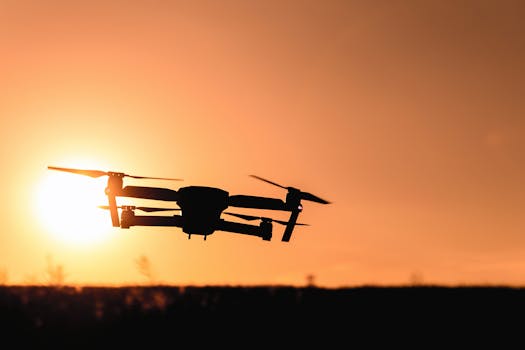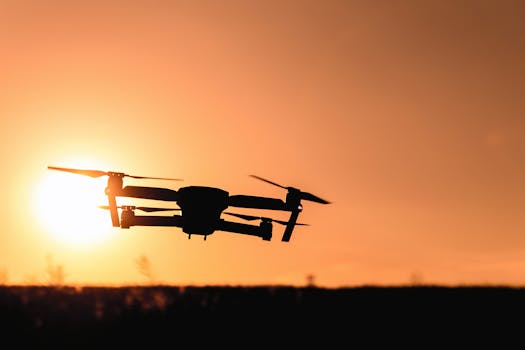Regulatory Challenges Facing Widespread Drone Delivery Adoption
The rapid advancement of drone technology has sparked significant interest in its potential to revolutionize the delivery industry. With promises of faster shipping times, reduced traffic congestion, and lower carbon emissions, drone delivery services are being hailed as a transformative solution for last-mile logistics. However, despite the technological readiness and growing consumer interest, the widespread adoption of delivery drones faces a complex web of regulatory challenges that must be addressed before these aerial couriers become a common sight in neighborhoods around the world.
One of the primary regulatory hurdles involves airspace management. Drones operate in low-altitude airspace, which is already shared with helicopters, small aircraft, and increasingly, other unmanned aerial vehicles. Ensuring the safe integration of delivery drones into this crowded environment requires comprehensive air traffic control systems tailored specifically for unmanned operations. Regulatory bodies such as the Federal Aviation Administration (FAA) in the United States and the European Union Aviation Safety Agency (EASA) in Europe are working to develop frameworks that can accommodate the growing number of drones while maintaining safety and efficiency. However, these efforts are still in their early stages, and the lack of standardized global regulations further complicates cross-border operations.
In addition to airspace concerns, privacy and data protection present significant regulatory challenges. Delivery drones are typically equipped with cameras and sensors to navigate and avoid obstacles, which raises concerns about the collection and storage of personal data. Residents may be uncomfortable with drones flying over private property, potentially capturing images or video without consent. Regulators must strike a balance between enabling technological innovation and protecting individual privacy rights. This involves establishing clear guidelines on data usage, retention, and sharing, as well as ensuring that drone operators comply with existing privacy laws.
Safety regulations also play a critical role in determining the feasibility of drone delivery services. Authorities must ensure that drones can operate reliably in various weather conditions, avoid collisions, and respond appropriately to emergencies. Certification processes for drone hardware and software, pilot training requirements, and maintenance protocols are all essential components of a robust regulatory framework. Moreover, liability issues must be clearly defined in the event of accidents or malfunctions. Determining who is responsible—whether it be the manufacturer, operator, or service provider—requires careful legal consideration and may vary depending on jurisdiction.
Furthermore, noise pollution and community acceptance are emerging as important regulatory considerations. While drones are generally quieter than traditional delivery vehicles, the cumulative noise from multiple drones operating in densely populated areas could become a nuisance. Local governments may impose restrictions on flight times, routes, or the number of drones allowed in a given area, which could limit the scalability of drone delivery networks. Engaging with communities and incorporating public feedback into regulatory decisions will be crucial for fostering acceptance and minimizing resistance.
As the technology continues to evolve, regulators face the ongoing challenge of keeping pace with innovation while ensuring public safety and trust. Collaborative efforts between government agencies, industry stakeholders, and the public will be essential in shaping a regulatory environment that supports the responsible deployment of delivery drones. Until these challenges are adequately addressed, the vision of drones delivering packages to our doorsteps will remain just out of reach.
Technological Innovations Shaping the Future of Delivery Drones

The rapid evolution of technology has significantly influenced the logistics and transportation sectors, with delivery drones emerging as one of the most promising innovations. These unmanned aerial vehicles (UAVs) are poised to revolutionize the way goods are transported, offering faster, more efficient, and environmentally friendly alternatives to traditional delivery methods. As companies continue to invest in research and development, several technological advancements are shaping the future of delivery drones, bringing them closer to widespread adoption and, potentially, to your doorstep.
One of the most critical innovations driving the progress of delivery drones is the development of advanced navigation and obstacle avoidance systems. Utilizing a combination of GPS, computer vision, and machine learning algorithms, modern drones can now navigate complex urban environments with remarkable precision. These systems enable drones to detect and avoid obstacles such as buildings, trees, and power lines, ensuring safe and reliable deliveries even in densely populated areas. Furthermore, real-time data processing allows drones to adapt to changing conditions, such as weather or traffic patterns, enhancing their operational efficiency.
In addition to navigation, improvements in battery technology are playing a pivotal role in extending the range and payload capacity of delivery drones. Traditional lithium-ion batteries are being replaced or supplemented by more energy-dense alternatives, such as solid-state batteries and hydrogen fuel cells. These innovations not only increase flight time but also reduce the frequency of recharging, making drone deliveries more practical for longer distances and heavier packages. As energy storage technology continues to advance, it is expected that drones will be able to service a broader range of delivery routes, including rural and remote areas.
Equally important is the integration of artificial intelligence and automation into drone operations. AI-powered systems can manage entire fleets of drones, optimizing delivery routes, scheduling maintenance, and ensuring compliance with airspace regulations. This level of automation reduces the need for human intervention, lowering operational costs and increasing scalability. Moreover, machine learning algorithms can analyze vast amounts of data to predict demand patterns, allowing companies to allocate resources more effectively and improve customer satisfaction.
Another significant innovation is the development of secure and efficient delivery mechanisms. Companies are experimenting with various methods, such as winch systems that lower packages to the ground, secure landing pads equipped with QR codes, and even smart mailboxes that communicate with drones. These solutions aim to ensure that deliveries are not only accurate but also safe from theft or damage. As these systems become more refined, they will play a crucial role in building consumer trust and acceptance of drone-based deliveries.
Regulatory frameworks are also evolving in response to these technological advancements. Governments and aviation authorities are working closely with industry stakeholders to establish guidelines that ensure safety, privacy, and airspace management. The implementation of Unmanned Traffic Management (UTM) systems, for instance, is a step toward integrating drones into national airspace alongside manned aircraft. These regulatory developments are essential for the large-scale deployment of delivery drones and will likely influence the pace at which they become a common sight in our skies.
Taken together, these technological innovations are not only enhancing the capabilities of delivery drones but also addressing the challenges that have hindered their widespread adoption. As these advancements continue to mature, the prospect of drones delivering packages directly to your doorstep is becoming increasingly realistic. With continued investment and collaboration between technology developers, logistics providers, and regulatory bodies, the future of delivery drones appears both promising and imminent.
Environmental and Economic Impacts of Drone-Based Deliveries
As the logistics industry continues to evolve, drone-based deliveries are emerging as a promising innovation with the potential to transform how goods are transported. While much attention has been given to the technological capabilities and regulatory challenges of delivery drones, it is equally important to examine their environmental and economic impacts. Understanding these implications is essential for assessing whether drones will become a sustainable and cost-effective solution for last-mile delivery.
From an environmental perspective, delivery drones offer several advantages over traditional delivery vehicles. One of the most significant benefits is the reduction in greenhouse gas emissions. Conventional delivery trucks, which often rely on fossil fuels, contribute substantially to urban air pollution and carbon emissions. In contrast, most delivery drones are powered by electricity, which can be sourced from renewable energy. As a result, widespread adoption of drones could lead to a measurable decrease in the carbon footprint associated with e-commerce and logistics. Moreover, drones can help alleviate traffic congestion in densely populated areas, further reducing emissions from idling vehicles and improving overall air quality.
In addition to lowering emissions, drones also have the potential to minimize noise pollution. Unlike large delivery trucks, drones operate with relatively quiet electric motors, making them less disruptive in residential neighborhoods. This characteristic is particularly beneficial in urban environments where noise regulations are stringent and community concerns about quality of life are paramount. Furthermore, drones can access remote or hard-to-reach areas without the need for extensive infrastructure, reducing the environmental impact of building and maintaining roads or delivery hubs in ecologically sensitive regions.
Economically, the integration of drones into delivery networks could lead to significant cost savings for businesses. By automating the delivery process and reducing reliance on human drivers, companies can lower labor costs and improve operational efficiency. Drones can also complete deliveries more quickly than ground vehicles, especially in congested urban areas or during peak traffic hours. This increased speed not only enhances customer satisfaction but also allows for a higher volume of deliveries within a shorter timeframe, potentially boosting revenue.
However, it is important to consider the initial investment and ongoing maintenance costs associated with drone technology. Developing a fleet of delivery drones requires substantial capital expenditure, including the cost of the drones themselves, charging infrastructure, and software systems for navigation and fleet management. Additionally, regulatory compliance and safety measures may impose further financial burdens. Despite these challenges, as technology advances and economies of scale are realized, the cost of drone deployment is expected to decrease, making it a more viable option for a broader range of businesses.
Moreover, the economic impact extends beyond logistics companies. The rise of drone deliveries could stimulate job creation in new sectors such as drone manufacturing, maintenance, and air traffic management. At the same time, it may disrupt traditional delivery jobs, necessitating workforce retraining and policy interventions to ensure a just transition.
In conclusion, while the environmental and economic impacts of drone-based deliveries present both opportunities and challenges, the potential benefits are substantial. As the technology matures and regulatory frameworks adapt, drones may indeed become a common sight at our doorsteps, offering a cleaner, faster, and more efficient alternative to conventional delivery methods.



